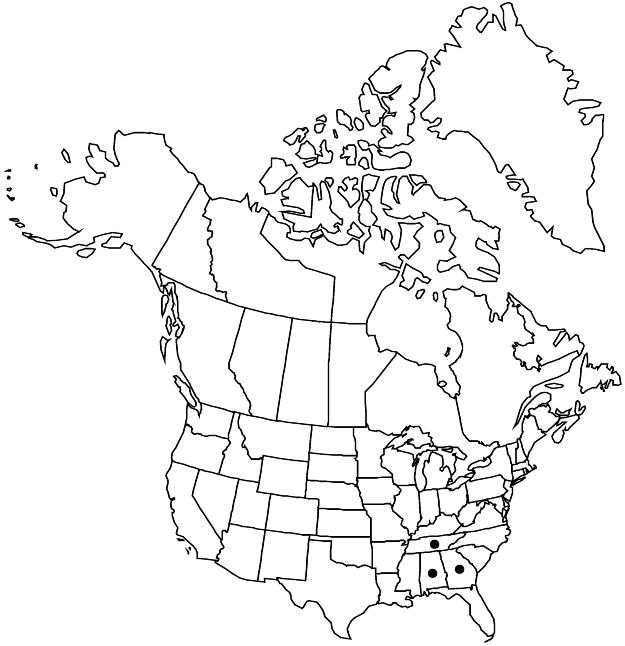Difference between revisions of "Crataegus alleghaniensis"
Bot. Gaz. 30: 337. 1900.
FNA>Volume Importer |
FNA>Volume Importer |
(No difference)
| |
Revision as of 23:09, 16 December 2019
Shrubs, 20–40(–50) dm. Stems: twigs ± flexuous, new growth reddish, glabrous, 1-year old reddish gray, older gray; thorns on twigs straight or slightly recurved, 2-years old deep chestnut brown to blackish, fine, 1.5–4 cm. Leaves: petiole length 25–30% blade, glabrous, densely sessile-glandular; blade elliptic-ovate to rhombic-ovate, (2–)3–5 cm, widest towards base, thin, base broadly cuneate, lobes 3 per side, sinuses short to moderately deep, lobe apex acute to acuminate, margins serrulate, teeth with small glands, veins 5 per side, apex acute, abaxial surface glabrous, adaxial pilose young, soon glabrescent. Inflorescences 2–4-flowered; branches glabrous; bracteoles caducous, linear, margins glandular. Flowers 20 mm diam.; hypanthium glabrous; sepals narrowly triangular, 5 mm, margins glandular-serrate, abaxially glabrous; stamens 10, anthers pink; styles 4. Pomes red, orbicular-pyriform, 8–12 mm diam., glabrous; sepals spreading; pyrenes 2–5.
Phenology: Flowering Apr; fruiting Sep–Oct.
Habitat: Rocky hills, brush
Elevation: 50–200 m
Distribution

Ala., Ga., Tenn.
Discussion
Crataegus alleghaniensis is known from a few locations in northeastern Alabama, Georgia, and Tennessee, and is apparently scarce.
Selected References
None.